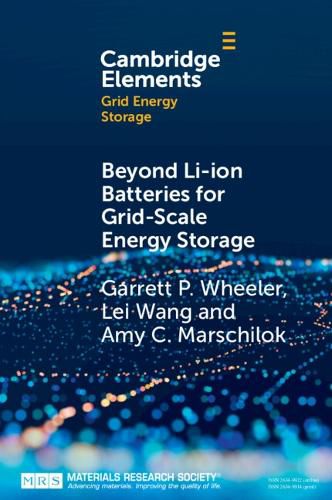Readings Newsletter
Become a Readings Member to make your shopping experience even easier.
Sign in or sign up for free!
You’re not far away from qualifying for FREE standard shipping within Australia
You’ve qualified for FREE standard shipping within Australia
The cart is loading…






In order to improve the resiliency of the grid and to enable integration of renewable energy sources into the grid, the utilization of battery systems to store energy for later demand is of the utmost importance. The implementation of grid-scale electrical energy storage systems can aid in peak shaving and load leveling, voltage and frequency regulation, as well as emergency power supply. Although the predominant battery chemistry currently used is Li-ion; due to cost, safety and sourcing concerns, incorporation of other battery technologies is of interest for expanding the breadth and depth of battery storage system installations. This Element discusses existing technologies beyond Li-ion battery storage chemistries that have seen grid-scale deployment, as well as several other promising battery technologies, and analyzes their chemistry mechanisms, battery construction and design, and corresponding advantages and disadvantages.
$9.00 standard shipping within Australia
FREE standard shipping within Australia for orders over $100.00
Express & International shipping calculated at checkout
Stock availability can be subject to change without notice. We recommend calling the shop or contacting our online team to check availability of low stock items. Please see our Shopping Online page for more details.
In order to improve the resiliency of the grid and to enable integration of renewable energy sources into the grid, the utilization of battery systems to store energy for later demand is of the utmost importance. The implementation of grid-scale electrical energy storage systems can aid in peak shaving and load leveling, voltage and frequency regulation, as well as emergency power supply. Although the predominant battery chemistry currently used is Li-ion; due to cost, safety and sourcing concerns, incorporation of other battery technologies is of interest for expanding the breadth and depth of battery storage system installations. This Element discusses existing technologies beyond Li-ion battery storage chemistries that have seen grid-scale deployment, as well as several other promising battery technologies, and analyzes their chemistry mechanisms, battery construction and design, and corresponding advantages and disadvantages.